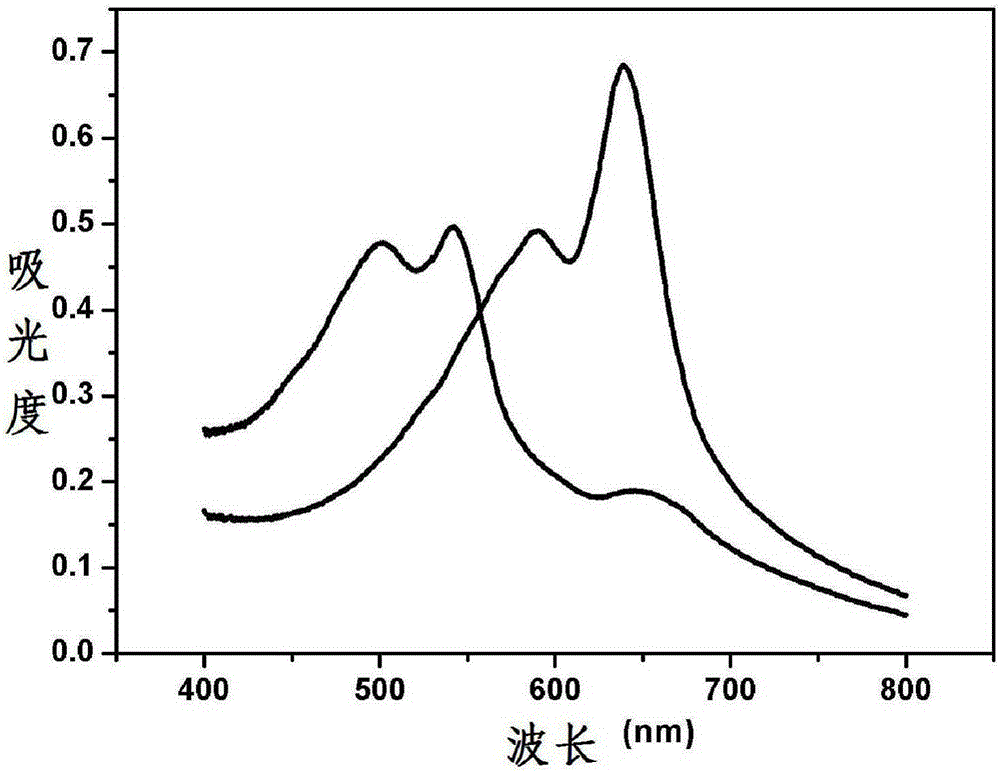Preparation method for allochroic sensor used for rapid identification and early diagnosis of IgA nephrosis
An early diagnosis and sensor technology, applied in the field of clinical medicine, can solve the problems that cannot be used in primary hospitals or large-scale censuses, time-consuming analysis, expensive, etc., and achieve the effects of being conducive to popularization, easy operation, and low price
- Summary
- Abstract
- Description
- Claims
- Application Information
AI Technical Summary
Problems solved by technology
Method used
Image
Examples
preparation example Construction
[0025] Such as figure 1 As shown, the method for preparing a color-changing sensor for rapid identification and early diagnosis of IgA nephropathy according to the embodiment of the present invention includes the following steps:
[0026] S101: obtaining a stable dispersion of diacetylene-like vesicles by thin film method or injection method;
[0027] S102: then adding the lectin dissolved in a buffer solution with a certain pH value to the diacetylene vesicle dispersion in a certain proportion;
[0028] S103: Finally, through physical adsorption or chemical coupling at a certain temperature, the lectin in the solution is combined or modified with diacetylene vesicles to obtain IgA with specific recognition function for GalNAC (N-acetylgalactosamine) Early recognition and diagnosis tool for kidney disease. Keep away from light.
[0029] In the color-changing sensor preparation method of the present invention, the diacetylene compound is 10,12-heptacosadiynoic acid (10,12-he...
Embodiment 1
[0045] Dissolve 10,12-pentacosadiynoic acid (10,12-pentacosadiynoic acid) in chloroform, use rotary evaporation to remove chloroform, add ultrapure water, and then ultrasonically hydrate to obtain non-polymerized butanediol prepared by thin film method Alkyne vesicle dispersion, and then irradiate the vesicle solution with ultraviolet light with a wavelength of 254nm to obtain a blue polymerized diacetylene vesicle dispersion. Dissolve the broad bean lectin (VVL) in a phosphate buffer solution with a pH of 7.4, add it to the dispersion of polymerized diacetylene vesicles, incubate at 25°C, and make the probe lectin in the solution by physical adsorption Coupled with diacetylene vesicles, the molar ratio of lectin to diacetylene vesicles is 1:1, and stored at room temperature in the dark.
[0046] At room temperature, add 0.5ml of the target detection sugar fragment GalNAC with a concentration of 0.01ug / ml to 1mL of the blue detection reagent, and it will change from blue to re...
Embodiment 2
[0048] Dissolve 10,12-nonacosadiynoic acid (10,12-nonacosadiynoic acid) in chloroform, remove chloroform by rotary evaporation, add ultrapure water, and then ultrasonically hydrate to obtain non-polymerized butanediol prepared by thin film method Alkyne vesicle dispersion, and then irradiate the vesicle solution with ultraviolet light with a wavelength of 254nm to obtain a blue polymerized diacetylene vesicle dispersion. Dissolve snail agglutinin (HAA) in a citrate buffer solution with a pH of 6, add it to the dispersion of polymerized diacetylene vesicles, incubate at 10°C, and agglomerate the probes in the solution by physical adsorption The lectin is coupled to diacetylene vesicles, the molar ratio of lectin to diacetylene vesicles is 1:5, and stored at room temperature in the dark.
[0049] At room temperature, 1ml of the target detection substance GalNAC with a concentration of 5ug / ml was added to 2ml of the blue detection reagent, and the color changed from blue to red w...
PUM
 Login to View More
Login to View More Abstract
Description
Claims
Application Information
 Login to View More
Login to View More - R&D
- Intellectual Property
- Life Sciences
- Materials
- Tech Scout
- Unparalleled Data Quality
- Higher Quality Content
- 60% Fewer Hallucinations
Browse by: Latest US Patents, China's latest patents, Technical Efficacy Thesaurus, Application Domain, Technology Topic, Popular Technical Reports.
© 2025 PatSnap. All rights reserved.Legal|Privacy policy|Modern Slavery Act Transparency Statement|Sitemap|About US| Contact US: help@patsnap.com



